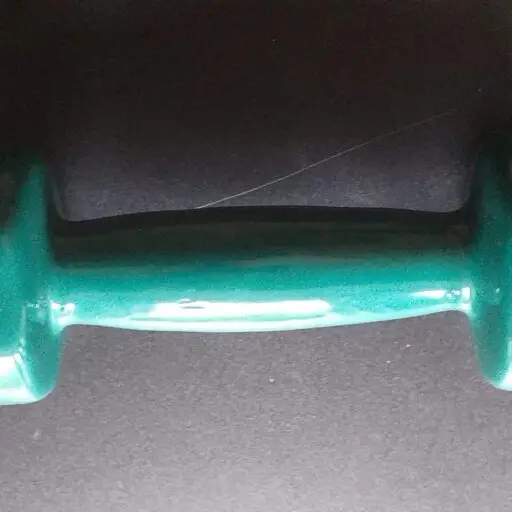All about the Dumbbell Side bend
(Back)
BENEFITS & MUSCLES WORKED: core strength, obliques, spinal mobility
START POSITION: Stand up straight, holding one (fairly heavy) dumbbell close to one side. Place the hand of the opposite arm onto the back of your head with the elbow bent. Feet should be no more than hip-width apart or a little narrower.
NOTES: Difficulty Rating: 55%
To perform the Dumbbell Side bend correctly, I have six key tips:
1) Don’t move your neck position – allow your head to tilt as your torso dips to one side.
2) Keep the dumbbell close and touching your side down and back up again – not pressed in – just a soft touch is delicate.
3) Focus hard on making an effort to tense your core on both sides as you lean over, but particularly tense it firmly as you raise the dumbbell.
4) Don’t bend the knees or use any other part of your body to assist the movement, except your Core and Obliques.
5) Allow the weight of the dumbbell to pull your arm straight down from the shoulder, but don’t use any arm muscles to assist the move. You should stop the downward move as soon as the upper tricep becomes vertical, and when the dumbbell is well above your knee.
6) Breathe out when raising the dumbbell, and in when lowering the dumbbell.
Watch Video
Back in the old-school days, I recall that this exercise was recommended to me by a boxing coach (and by the owner of my favourite gym, Bob’s Gym in Avonmouth, Bristol, England) to help build strong oblique muscles, as my sides were unable to withstand heavy body punches. Bob’s was a proper old-school establishment – rough, ready, and raw, with an extra focus on technique. Modern gyms sometimes seem too clean, polished, and sterile for my liking (and expensive!). Anyway, the Dumbbell Side bend is undoubtedly a timeless classic, and the obliques are often overlooked and forgotten about. Please learn it.
Perform several reps on one side before switching the dumbbell to the other hand and working on the other side. Be cautious when starting this exercise, as most people have underdeveloped Oblique strength. However, the Oblique muscles will generally increase their strength and adapt very quickly to regular training, allowing you to progress to heavier dumbbells quite quickly.
So, when starting, your reps should be much higher, but as you increase the weight, you should do fewer reps and more sets (particularly if you aim to get super strong as opposed to just toning up and getting into shape).

